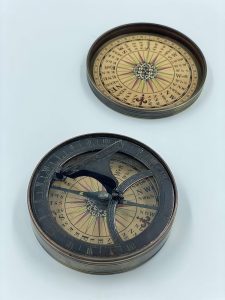Embracing Nature’s Patterns: The Timeless Beauty of a Leopard ‘skin Jasper Bracelet

There are stones that look polished into obedience. Then there are stones that look alive. Leopardskin jasper belongs to the second kind. It doesn’t try to hide its blemishes. The markings scatter, some sharp like ink drops, others blurred as if fading smoke. Brown, red, pale grey, sometimes even hints of pink. Each piece is unpredictable. That’s why a leopard’s skin jasper bracelet feels more like a story than an accessory.
Science explains it simply—orbicular jasper, formed during ancient volcanic activity. But science doesn’t capture the feeling of holding one. No two beads alike. A pattern that will never repeat again. Like fingerprints, or the spots of a wild cat, each bead carries a character of its own.
Echoes Across Cultures
Different places. Different people. Yet the stone keeps showing up.
Among some Native traditions in the Americas, jasper was used for protection—especially when stepping into unknown spiritual spaces. In Mexico, healers linked the stone with totem animals, guides that walked with you, unseen. Across the ocean, shamans in other lands reached for the same stone when crossing thresholds, seeking balance between the worlds.
Coincidence? Or something deeper? Whatever the reason, the patterns on the stone made people pause, listen, believe. Maybe it’s because those markings feel alive, like movement caught and held forever in stone.
Why a Bracelet Matters
Why not carve it into a statue, or keep it polished on a shelf? Because a bracelet lives differently. It sits on the wrist. Moves with you. You catch sight of it while typing, or in the corner of your eye when you lift a glass. Constant presence, quiet reminder.
A leopard’s skin jasper bracelet doesn’t scream for attention. Its earth-tones slip easily into daily life. Yet it always holds something back, some wildness in its shifting colours. Run your fingers across the beads and you’ll feel it—smooth, yes, but never sterile. Many people find themselves doing it unconsciously, rolling the beads when restless. Like a grounding tool you never intended to use, but do anyway.
Beauty in Imperfection
Most things we buy now are copies of copies. Perfectly manufactured, soulless in their repetition. This stone refuses that.
Look at the markings. They aren’t straight lines. They don’t “match.” They remind us of something often forgotten—that imperfection carries its own kind of beauty. The leopard’s coat isn’t perfect symmetry either. That’s the point. It’s striking because it’s irregular.
In a way, the bracelet pushes back against the culture of flawless. It asks: why should perfect mean better? Why not let wildness sit on your wrist?
Caring for the Stone
Of course, nature’s work still needs care. Leopardskin jasper is strong but not invincible. Wash it with mild soap, nothing harsher. Too much sun can dull the shades, so don’t abandon it on a windowsill. Keep it separate from harder stones if you want to avoid scratches.
And then there are rituals. Moonlight baths. Running water cleansing. Some see them as energy resets, others as superstition. But maybe it doesn’t matter. What matters is that pause—the act of tending to the bracelet, of treating it as something more than decoration.
Why It Stays With People
Here’s the thing: most jewellery is seasonal. It comes, it goes. But this stone? People keep returning to it. Sometimes for its grounding presence. Sometimes because they believe it protects, or heals. And sometimes—no mysticism at all—it’s just because the bracelet feels honest.
Mass production makes us crave uniqueness. A stone like this answers that craving. Each bead, each swirl, declares difference. And difference, in the end, is what people carry with pride.
Conclusion
So what is a leopard’s jasper bracelet really? A fashion piece? A grounding tool? A fragment of ancient earth? Maybe all of them. Maybe more. What’s certain is this: it isn’t flawless, it isn’t repeatable, and it doesn’t try to be. Instead, it carries the untidy, irregular, wild beauty of the natural world—and that is what makes it worth wearing.









